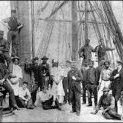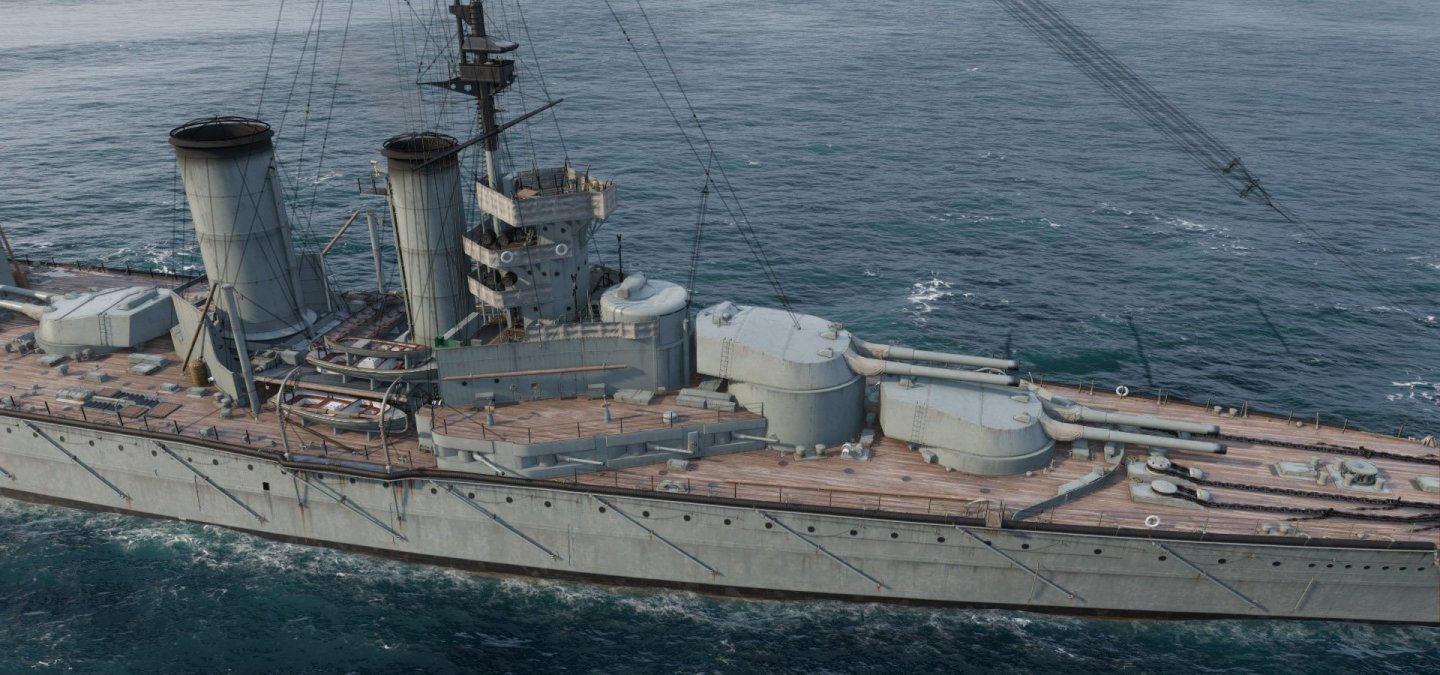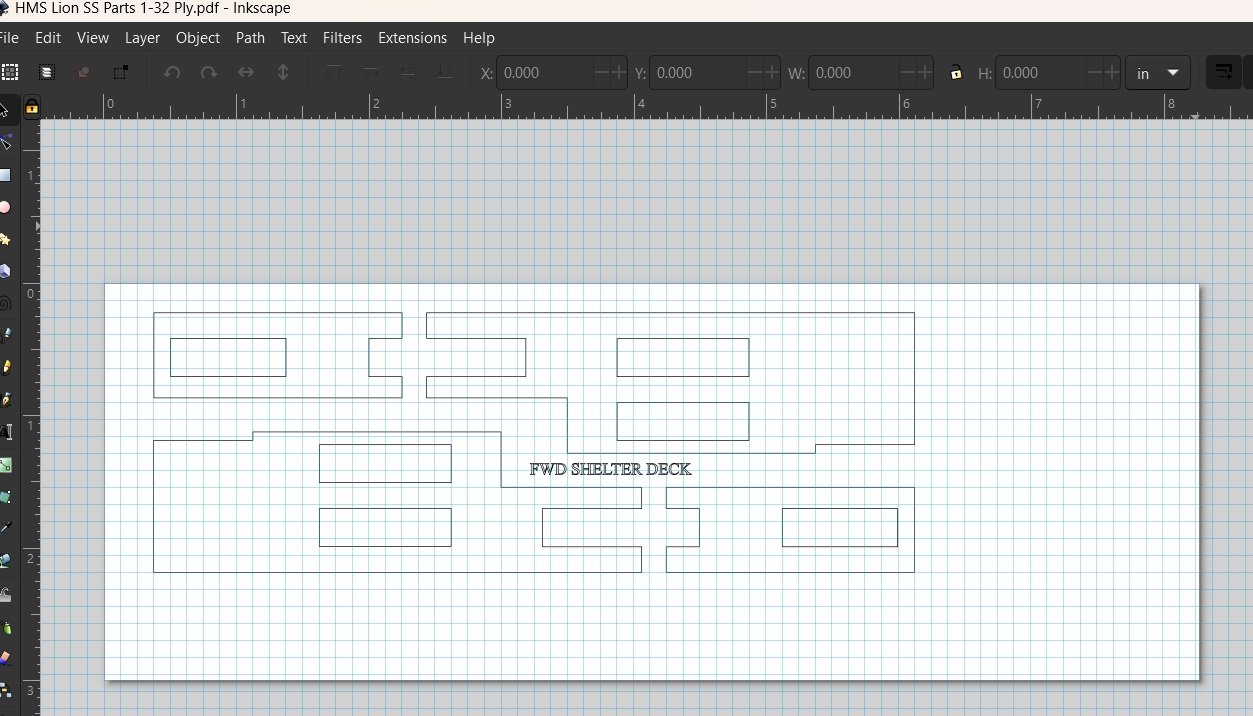-
Posts
2,115 -
Joined
-
Last visited
Content Type
Profiles
Forums
Gallery
Events
Everything posted by Ian_Grant
-
Just as my dad's generation of toolmakers thought CNC machines were the devil's own.
- 235 replies
-
To me it's a tool, no more and no less, similar to the laser cutter which cuts accurate openings without me having to use an xacto knife. The teenaged me sliced up some dowel and drilled holes for the guns; this time around the print can include the viewing ports for the gunners which would have been difficult by hand. Besides, I enjoy the challenge of drawing with TinkerCAD's limited number of shape "primitives".
- 235 replies
-
Getting to love my 3D printer. I drew the secondary battery casemate gun mount parts (what I'm calling the vertical cylinders from which the barrels project) in TinkerCAD and printed three revisions of a set of four in a single hour including CAD time. Had I gone to the library with Rev1, the printer would have been far slower and I would not have had time in the booking to do two more revisions, perhaps not even one. Here I just send the slicer output file to the Bambu over WiFi, and if the filament is already loaded in it just goes ahead and prints without me even having to go upstairs (when it starts a print a window opens on my laptop with the printer's status screen). Looking forward to doing more and getting this model finished. Sixteen Rev 3 gun mounts being printed: The back of the parts is flat to lie on the print bed; the fronts (at top) are slowly being rounded out as layers are added. These took 50 layers. I also drew and printed the main capstan and associated rollers, for the foredeck. This has 40 layers. Here it is with a quick splash of some matt paint applied so details are visible. Camera is certainly unforgiving; the naked eye hardly sees the striations. They should be better with more paint layered on.
- 235 replies
-
Finally got my laptop to bind to the 3D printer via our wifi (simple once you know how but a bit obscure in Bambu's "instructions", ok let's be honest and say non-existent) and tried a test print in PLA for the portion of the conning tower above the flag deck. Here I highlighted the viewing slits with a bit of paint. Sorry for poor focus; the hole to mount the range finder is nearly invisible. I will print the "real" part in PETG. You can see the conning tower behind "B" turret in this 3D render, except the conning tower is shown as round, as is the main funnel, which is not in agreement with my Norman Ough drawings.
- 235 replies
-
Hi Jeff; Hope your medical issues are solved!! Those lines are the mainsail jeer and clew garnet lines, and the main topsail sheets; a total of six lines. These pass through the quarterdeck and belay to parts 89, as you say. I'm not sure where you saw four lines and eight lines on Bill's model. Longridge notes these lines passing through the deck on pg 267 Plan #11 (see top right). Mainsail jeer lines are mentioned on pg 251; mostly they are the same as the foreyard jeer lines detailed on pg 241 except that they pass through the deck. See the drawing "Plan No. 8" for beautifully detailed illustration of jeers and many other things at the fore yard. Main clew garnets are mentioned on pg 252 but as above refer to the fore clew garnets described on pg 243 bottom. Main topsail sheet lines are described top of pg254. See also Longridge photo of the bitts, Plate 46 at pg 196, with descriptive caption.
-
Kevin, say it ain't so!!! When you and I started our Heller builds, the refit was supposed to be twenty years so I hoped to visit a complete ship in my early mid 70's. Now you say all the newly painted planking is off again? What's the new timeline? (Sorry Dan for sidetracking your log!) Ian
-
Added the portholes to starboard side with the aid of a couple of little jigs to define vertical and measurements from drawings for horizontal. One small hitch - on Etsy the eyelets were described as having a "central opening" of 1.5mm which I took for hole diameter. This would have been perfect. However, in actual fact 1.5mm is the hole you need to accept the eyelet body and the eyelet hole is somewhat less. Too bad but it's (altogether now) "close enough for RC". 😉 Ports for admiral's/captain's day cabin, and wardroom. Other portholes. I'm starting the superstructures. I figured I might as well laser the secondary battery casemate openings so started drawing in Inkscape. More to do, then another trip to the library. Still waiting for the smoke unit.
- 235 replies
-
A lot of us have followed Glen through many of his superb SIB builds. This is a nice change...
- 301 replies
-
- Constitution
- Bluejacket Shipcrafters
-
(and 1 more)
Tagged with:
-
I forgot to include a shot of the remaining removable deck glued to frame and weighted down, with what I had available.
- 235 replies
-
Decks bandsawn (bandsawed?) roughly to shape. Decks have a "shelf" projecting slightly beyond hull side for most of the length; this was used to store the brailed-up torpedo net. God knows how I am going to make the "brailing davits" which occur about every 2" along the rails. I made a start at marking out superstructure locations in green masking tape. Foredeck and aft deck not glued down for reason given above. Some turret barbettes were made from some old pine I had lying around, by gluing up a rectangular blank, centre-drilling along the axis, then sitting the blank on a rod inserted into scrap plywood and rotating the blank into my tablesaw blade. They're good but not perfect; I had planned to 3D print them in PETG and will probably do so anyway. Micro servo which rotates the forward turrets sticks up through the deck behind "B" turret; it will be hidden in the forward superstructure below the shelter deck. I'll need another big hole under there for the sound effects speaker to emit into air without being muffled by the hull. Luckily the fwd shelter deck is open along the aft edge. I've realized that dad machined the front lower corners of the turrets a bit too low. Am considering adding shims tapering from 1/16" to zero at centre of each turret. Also need to 3D print some rangefinder and sighting hoods. Thanks for following. Ian Too bad about the plywood flaw to starboard of the turrets. Oh well.....😞
- 235 replies
-
I've said this before, but you've outdone yourself yet again, Glen! Love the chain and rusty nameplate; they go perfectly with the ambience of the tattered sails. Waiting to see what you come up with next! Regards, Ian
- 185 replies
-
- Flying Dutchman
- Black pearl
-
(and 2 more)
Tagged with:
-
HaHa!! Those rigging screws look brilliant!
- 553 replies
-
- sloop of war
- constellation
-
(and 3 more)
Tagged with:
-
First piece of deck glued down to the removable frame, and hopefully not to the nearby hull frames. This deck runs aft from the breakwater to beneath the forward superstructure where it is full width, to hide the seam. The next piece will run the remaining length of the removable portion. Here it is weighted down while glue sets; sadly I lack sections of railway track. I'm considering bringing in some of my extra bricks from the garage when the next, longer, section of deck goes on. I can't glue down the forward and aft fixed decks until I do a float test and decide how much unaccessible ballast to add - I'm shifting the main battery forward one compartment compared to the original location to allow the smoke unit to take its place between the fwd and aft stacks. (Assuming I can fit in the unit and its piping). I expect less ballast to be required at the bow.
- 235 replies
-
Hmmm.... I've been wondering about ladders! Teenaged me used some brass coarse representations of ladders I found somewhere. Probably will need more to meet increased accuracy requirements. I see a 0.2mm nozzle in my future......
- 235 replies
-
That's a big garage - hope some of it is devoted to a workshop!
- 235 replies
-
Nice Victory lanterns, Kevin! I bought the Bambu A1 instead, in the end. We were away and then Christmas loomed; I haven't done a damn thing with it other than printing a "boatie" which my daughter immediately claimed. Last thing I recall I was having trouble getting my PC to "see" the printer through our WiFi. Will need to look into it as I'm getting close to needing some 3D printed superstructure parts.
- 235 replies
-
Yeah, and slipping while using a bandsaw makes a mess too, which I discovered last year on another build. 'Nuff said. 😭 I woke up with the idea of temporarily fixing the ends of the taper at where the wood wants to be naturally and simply belt sanding the high side and the plywood gusset until level, instead of messing up the angles which were a pain to achieve. Think I'll go with that. If I blow it I can always try again with new pieces. Thanks! And thanks for the encouragement! Ian
- 235 replies
-
Hi Kevin, Our library lasers have adjustable beds several inches down (actually up to about 10" if your material is REALLY thick) in the enclosure, with hinged glass covers to enclose for fume control. There's no way to "slide" the material over in increments, even between runs, due to the enclosed structure. See some of Epilog's machines here: https://www.epiloglaser.com/en-ca/ In practise one places one's material in them, then adjusts the bed up and down depending on the material thickness to get the laser's focus correct. They have a little L-shaped tool that "hangs" off the laser head and when one's material is just touching said tool, the focus is correct. There's no way to "slide" the material over in increments unfortunately. No, I ordered micro metal eyelets to glue into drilled holes in the ship, 1.5mm opening with 3.5mm flange. Close enough for RC......😏 Still wondering whether/how to add "glass" to them...🤔 Ian
- 235 replies
-
Perhaps, but I deemed it too hard to draw the exact outline of the hull in Inkscape in order to get border planks exactly accurate. I'm not an Inscape savant and random curves are difficult. If I could have done that borders round the superstructures would have been fairly simple. As to the butt joints, I ended up drawing a 5-butt shift because that was convenient in the grid setting I chose in Inkscape. Don't know if that shift ever existed. Good enough for RC I think. Ian
- 235 replies
-
It's been a while. Not much work done over Christmas but I am making some progress now. Used the laser cutter to etch deck planking on 1/16" baltic plywood. Here's the largest piece 24"x18" with tw0 replicas of 8" wide decking, and two smaller pieces for the foredeck forward/abaft of the breakwater. I lasered these two apart following the curve of the breakwater as it seemed the best way to keep the crack less noticeable. "Planks" are 1.5mm wide, a scale 20ft long. I added strips of wood just below the bulwark stringer because the new portholes fell just below it and I wanted more to glue them into than the 1/32" ply skin. You can see these new-looking pieces below, and also blocks further down into which to anchor the torpedo net booms. Teenage me just glued them into the skin but old me is fussier. While paring material off a bulkhead, my 1/4" chisel slipped and of course went clean through the bottom. One more patch to add. While waiting for my micro eyelets for portholes I started the frame for the removable deck portion, which encompasses "A" and "B" turrets, both superstructures, and the central "Q" turret. Here we see the plywood mount for "A" and "B" turrets built into the framing. In order to make the frame, I temporarily screwed the outer strips to the inside hull, with a slight gap, letting them bend naturally. Then I filed/sanded their tops flush with the sheer line, finally adding cross members. Hope is that after adding the deck ply, the whole will retain its shape when I remove the screws (other hope is that I can glue the deck on without gluing it to the hull....that would be a major hiccup!! The fore deck continues to the aft end of the aft superstructure, where it forms the deck in this superstructure's central well boat storage. Sadly I just noticed the tapering aft end shown here is slightly twisted off level athwartships wrt the rest of the deck. Sigh. I'll need to cut out the large plywood stiffener and fix the beams, then reapply the stiffener. Temporary screws through the hull, holding the frame's outer members. Thanks for following!
- 235 replies
About us
Modelshipworld - Advancing Ship Modeling through Research
SSL Secured
Your security is important for us so this Website is SSL-Secured
NRG Mailing Address
Nautical Research Guild
237 South Lincoln Street
Westmont IL, 60559-1917
Model Ship World ® and the MSW logo are Registered Trademarks, and belong to the Nautical Research Guild (United States Patent and Trademark Office: No. 6,929,264 & No. 6,929,274, registered Dec. 20, 2022)
Helpful Links
About the NRG
If you enjoy building ship models that are historically accurate as well as beautiful, then The Nautical Research Guild (NRG) is just right for you.
The Guild is a non-profit educational organization whose mission is to “Advance Ship Modeling Through Research”. We provide support to our members in their efforts to raise the quality of their model ships.
The Nautical Research Guild has published our world-renowned quarterly magazine, The Nautical Research Journal, since 1955. The pages of the Journal are full of articles by accomplished ship modelers who show you how they create those exquisite details on their models, and by maritime historians who show you the correct details to build. The Journal is available in both print and digital editions. Go to the NRG web site (www.thenrg.org) to download a complimentary digital copy of the Journal. The NRG also publishes plan sets, books and compilations of back issues of the Journal and the former Ships in Scale and Model Ship Builder magazines.








